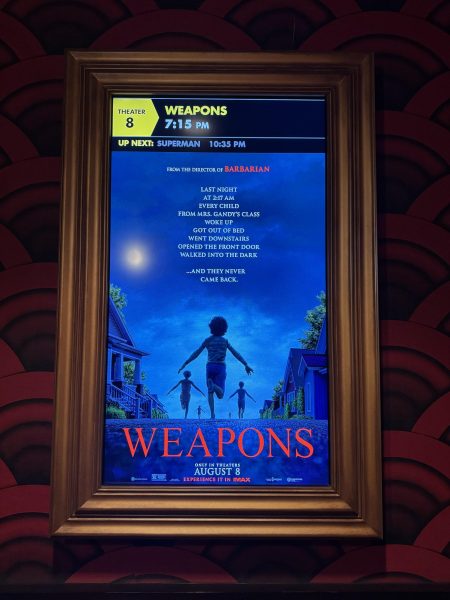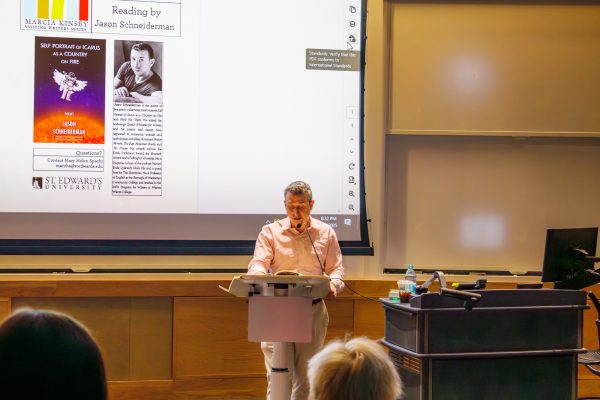12VideoGames
What are the first things that come to mind when you think of video games? Do you think of the “Call of Duty” or “Grand Theft Auto” series? Or perhaps the “Mario”franchise or your favorite mobile phone games? Whatever you might happen to think of, it is generally safe to say that most games deal with more lighthearted content, or their primary purpose is simply to entertain. But what is stopping games from exploring serious topics and complex issues that are relevant in our day-to-day lives?
Two Interactive Game Studies majors at St. Edward’s University are challenging that very question. St. Edward’s students Savannah Smith and Emma Nix are collaborating to create a thought provoking video game that deals with the complexities and challenges associated with mental illnesses. With this topic in mind, these two are taking very special care to approach it with a delicate hand. These are real issues that might not only affect the people you know, but you may even have your own experiences with them as well. When asked what kind of message they hope to convey to their audience through their game, this is what they had to say:
Nix: “Basically, we want it to be a realistic and impactful portrayal of struggling with mental illness and learning to use healthy coping mechanisms through therapy. We want to avoid stereotypes and offensive representations as much as possible and show that while mental illness isn’t something that can be cured, and progress isn’t always linear, it’s still very possible to improve your quality of life and wellbeing.”
Smith: “Ideally, I would hope that players who can’t relate to these experiences are at least emotionally moved by the story. I want to raise awareness and acceptance, breaking down the stigma and silence. We’ve been working really hard to make the character as deep as possible without them having a designated gender, ethnicity, etc. We want the character to be a vessel in which the player can put themselves in the shoes of the character and become personally invested. For those who live with mental illness, and can empathize with the stories we’ll present, I think it’ll be cathartic; it’s so important to be able to feel understood, validated and represented.”
This approach to game making is extremely uncommon in the industry. Games that deal with serious real-world issues are often subjugated to small, independent game developers that cannot afford huge marketing campaigns as they are a financial risk; there is no guarantee they will sell well in the mainstream market. Nonetheless, creating such a game is a valuable experience for both Nix and Smith and looks extremely good on a resume.
Most young game developers tend to make much more lighthearted games throughout their learning experience. Finding a niche within the industry can also be quite difficult unless one has a clear, unique vision. Curious to know what incentivized them to make a game with such a serious topic, I questioned Smith and Nix on their motives.
Nix: “It was Savannah’s idea. Mental illness and therapy is something I have a lot of experience with, both through myself and through the people I’ve known throughout my life, so I thought there was a lot to work with in terms of making a game based off of it.”
Smith: “For a while now, I’ve been wanting to make a game like this. Last semester, a recurring theme in my artwork and personal projects was the struggle of living with high functioning anxiety and depression and the fear of acknowledging my own emotions and weaknesses. I felt like I always had to present the very best version of myself in everything that I did, so the only avenues that I could express myself through was my art, comic books and game concepts. Additionally, three of my best friends that I had through [kindergarten through 12th] struggled with Borderline Personality Disorder. I don’t talk to them much anymore, but I see this as an opportunity to document and share some of their stories anonymously, and raise awareness about BPD, since there isn’t much representation in the media.”
Conveying mental illness in a video game form is already a challenge, but then trying to get players to empathize with such issues is quite the tall order as well. Many do not know much about the development side of the industry, but making video games is an extremely skill-based art field that takes a large degree of patience and technical specialty to achieve in. Why would anyone want to work in this industry?
Nix: “I guess just finally realizing it was a viable career option. It took a surprisingly long time for me to come to that realization (the summer before my junior year of high school). I’ve loved playing games my entire life and honestly, I can’t really see myself doing anything else and truly enjoying it, like I enjoy making games.”
Smith: “Final Fantasy X was the defining moment in my childhood. In my early childhood, I found myself motivated to learn how to play music, write and make art simply because I wanted to recreate things or moments from this game. I wanted to be a creative force behind the game and the world that I found so cathartic as a child. For this project, I’m the creative director; I’ll be making the art, the world and the atmosphere. I think it’s a beautiful thing to be able to create beautiful and unique worlds that people can explore, but also bring writing and characters to life in a visual way. I hope to have a career in the future where I can make concept art for the characters, worlds, monsters and items in games.”
Working on this game seems to be quite the ambitious task, but once completed, it will no doubt put them on the map a as a new independent game team within the industry. Smith and Nix hope to have this project done before they graduate. The project surely is a breath of fresh air from what you see from most games these days, and that is a welcomed change that I sure am excited for; not only to experience it myself, but also for the reaction of others once these two share their work with our campus and the rest of the world.






